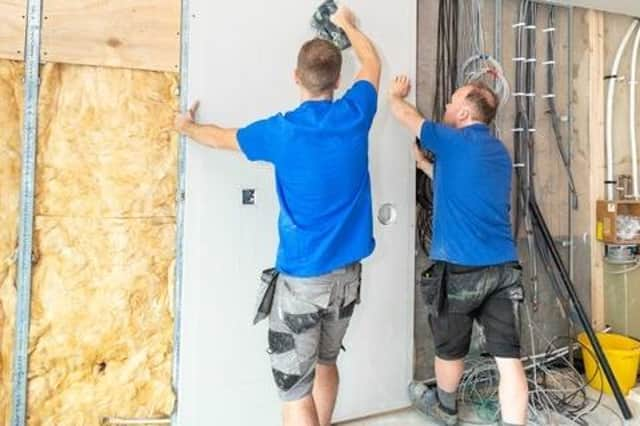Column: Jemima Parker from Zero Carbon Harrogate - Cutting the cost of your heating bill


Zero Carbon Harrogate (ZCH) wants to help everyone get smarter about energy efficiency. Usually this is a combination of actions, which when added together should amount to worthwhile savings – both financial and in our carbon emissions.
To find out where your home is leaking heat and what you can do about it you can ask a Retrofit Assessor to examine your home. Then deploy a Retrofit Coordinator to manage the remedial works to make your home warmer. As there are very few of these professionals locally and approximately 67,000 homes in the Harrogate District most of which need retrofitting, ZCH is using grant funding to pay for a number of local people to undertake Retrofit Assessor and Retrofit Coordinator training.
Advertisement
Hide AdAdvertisement
Hide AdHere’s our top five actions for making your home less leaky:
1. Insulation. Check you have sufficient loft insulation and it covers every part of your loft. 30cm thickness is now recommended and it is certainly worth topping up to 20cm. Make sure your hot water tank has an up-to-date insulating jacket.
2. Reduce drafts. In older houses with wooden window frames and external doors, simple DIY draught excluders can greatly reduce heat loss. Bare suspended wooden floor will usually have small gaps at the skirting boards and sometimes between the boards too. A foam filler is an easy way to seal the gaps.
3. Central heating. Fit reflective panels behind radiators on outside walls, a DIY job, but not necessary if you have cavity wall insulation. Get thermostatic radiator valves fitted and only heat rooms when you need to. Get a heating programmer installed or a smart energy control system. Reduce the thermostat setting by one degree – it can save 10 per cent of your energy use.
Advertisement
Hide AdAdvertisement
Hide Ad4. Replacing your boiler. If you have an old boiler, which isn’t a condensing model, consider replacing it. Consider switching to an electric heat pump: for every kWh of electricity, heat pumps give 3 to 4 kWh of heat. While electricity cost about three times gas now, running costs are similar, but with a renewable electricity tariff, your carbon emissions will be much lower.
5. Wall Insulation. About a third of all the heat lost in an uninsulated home escapes through the walls. By properly insulating cavity walls, you will save energy and reduce your heating bill. Some 1920s houses and most post-1930 houses have cavity walls. You should recover the cost of installing cavity wall insulation (£1200-2500) in 4-5 years and reduce your (gas) heating bill by £285-480pa. If you use oil or LPG heating, you could reduce your heating bill even more.
If you have solid walls the cost of insulating these internally, for a three bedroom semi, would be around £10K, or externally around £14K. It would give savings of about £390pa (gas heating) so the return on your investment is 3.9 per cent (internal) or 2.8per cent (external insulation).
More detailed information on energy saving and retrofitting are available on the Zero Carbon Harrogate website www.zerocarbonharrogate.org.uk